20 Best Minimum Viable Product Examples: What Iconic Brands and Newcomers Taught Me About Product Success

Launching a polished product without confirming it meets your audience’s needs is like walking into a crowded room and trying to sell beautifully carved ice to penguins.
You might have the fanciest product, but if it doesn’t solve a problem or fulfill a desire, you’re going to hear nothing but crickets. Surprisingly, many businesses fall into this trap, creating products that look great but miss the mark on addressing real customer needs.
In my research, I found that about 90% of startups fail because they dive headfirst into development without confirming if their idea hits the mark. They invest countless hours and resources only to discover they’ve missed the pulse of their target audience.
Here’s the silver lining: this kind of heartbreak is totally avoidable. You can sidestep this common pitfall by creating a minimum viable product (MVP).

An MVP allows you to test your concept in the real world, gather authentic user feedback, and make informed decisions based on data. Think of it as a safety net that enables you to refine your product before committing fully.
With an MVP, you can test your idea, gather real feedback, and pivot based on what you learn.
Countless successful brands kicked off with MVPs. They listened to their early users, made adjustments, and ultimately launched products that people actually wanted.
In this post, I’ve analyzed excellent MVP examples and strategies for you, and I’ll unpack the secrets to their success.
Table of Contents
- What is a Minimum Viable Product (MVP)?
- What an MVP is not?
- 20 Best MVP Examples That Evolved Into Major Success Stories
- How to Build a Winning MVP
What is a Minimum Viable Product (MVP)?
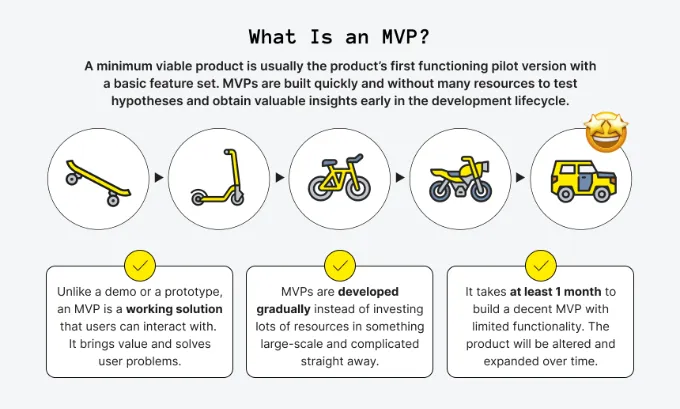
Source: Upsilon
A minimum viable product (MVP) is the initial version of a product that includes only the essential features required for it to work as intended.
Think of it like this: Minimum means limited features, and Viable means they are enough for the product to function properly.
So, what’s the secret sauce to MVP product development? Here’s the scoop:
🚀 Serve a target audience
Think of your MVP as a tailored suit—it needs to fit a specific group of users perfectly. Knowing your audience helps you craft a product they’ll love.
🚀 Address a key problem or need
Your MVP should tackle a real issue. If it doesn’t, you might as well be selling ice to Eskimos!
🚀 Avoids spending extra money on unnecessary features
Focus on the basics to test and refine your product. This keeps costs low and speeds up development—it’s like getting a head start on a race!
🚀 Helps the development team know exactly what to build
An MVP acts like a compass for your designers and developers, steering them toward focusing on just the core components.
An MVP is your ticket to gathering valuable user feedback. If the audience loves it, you and your development team can confidently level up your product.
Here’s an interesting insight on the value of user feedback shared by Calvin Cica, one of our product designers at Appetiser:
![]()
User feedback is like solid gold for Product Designers. They tell you so much about your app, as they see it from a completely different (untrained eye) perspective. Allowing you to see things that you would have never even thought of sometimes.
What an MVP is not?
Validation, speed-to-market, and basic features define an MVP, but let’s not confuse it with a test product or a shortcut to production. Here’s a quick guide to what an MVP is not:
❎ A quick fix
Just because MVPs help you move fast doesn’t mean you should rush the quality. An MVP should be a well-thought-out product that meets user needs and sets the stage for growth.
❎ A proof of concept
A proof of concept (POC) shows your idea can work, while an MVP tests if it’ll fly with users. It’s like driving a prototype to see if it’s ready for the big leagues.
❎ Just a rough draft
An MVP isn’t scribbled notes; it’s the essential version with enough quality to demonstrate value to users.
❎ The same as a Minimum Marketable Product (MMP)
Think of an MVP as the testing ground, while an MMP is ready for the spotlight. A solid MVP can evolve into an MMP with some tweaks, but they serve different roles.
Our Head of Delivery at Appetiser Apps, Maku Montecer, shared an interesting insight about developing apps:
![]()
I think the biggest misconception is the idea of launching a perfect app. There’s no such thing as a perfect app. There will always be issues, things that break, and odd things that users encounter. But as long as you protect your core concept and ensure that what you want to test works, that’s what matters. Everything else is secondary.
To summarize, here’s a comparison table:
| What an MVP is | What an MVP is not |
|---|---|
| ✅Serves a target audience | ❌A quick fix |
| ✅Addresses a key problem or need | ❌A proof of concept |
| ✅Avoids spending extra money on unnecessary features | ❌Just a rough draft |
| ✅Helps the development team know exactly what to build | ❌The same as a Minimum Marketable Product (MMP) |
Now that we’ve busted these MVP myths, let’s look into epic MVP success stories that changed the game.
20 Best MVP Examples That Evolved Into Major Success Stories
At Appetiser, we’re fond of hearing and telling startup success stories. Here are some of the best minimum viable product examples from brands that have made incredible impacts:
| Company | What They Offer |
|---|---|
| 1. Realworld | The app for life’s adulting essentials |
| 2. Cradlewise | AI-powered baby cribs that auto-soothe |
| 3. Agility Robotics | Robots built to walk and work like humans |
| 4. Shiprocket | Shipping and logistics for e-commerce |
| 5. Amazon | Global leader in e-commerce and cloud services |
| 6. Dropbox | Simple, secure cloud storage for files. |
| 7. Duolingo | Gamified language-learning app. |
| 8. Uber | On-demand rides and food delivery. |
| 9. Vello | Connecting celebrities and their biggest fans through technology |
| 10. Roamni | Audio-guided tours by locals. |
| 11. Airbnb | Platform for unique home rentals and experiences. |
| 12. Wine Valet | Boutique wine recommendation app |
| 13. Pinch | Seamless photo and video collaboration platform |
| 14. Buffer | Social media scheduling and analytics |
| 15. Spotify | Music and podcast streaming platform |
| 16. Netflix | Streaming for movies and shows |
| 17. BuzzMe | Social networking for communities |
| 18. Groupon | Deals on local services and events |
| 19. AngelList | Startup funding and job platform |
| 20. Zappos | Online shoe and clothing retailer |
1. Realworld: Navigating life’s curveballs with an MVP mindset
Year founded: 2017
Industry: Technology
Headquarters: New York, USA
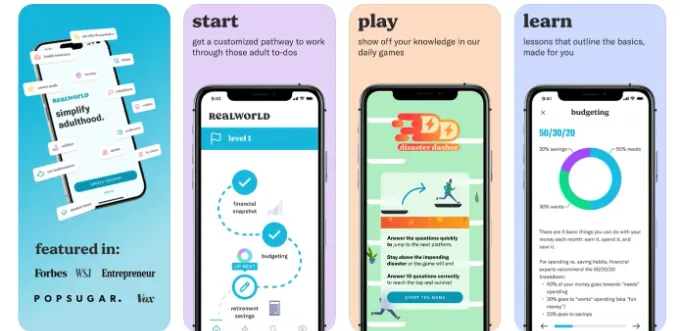
Source: Realworld
Imagine navigating adulthood with a trusty guide in your pocket—that’s the brilliance behind app startup Realworld. The brainchild of Genevieve Bellaire, the platform is designed to help young adults tackle the essentials of life: money, healthcare, housing, and all those “grown-up” topics no one warned us about.
The app’s development journey mirrors the rollercoaster of early adulthood—full of twists, turns, and a bit of trial and error. Bellaire took the MVP route, which isn’t about delivering a flawless product from the start—because let’s face it, adulthood is rarely perfect.
Source: Startup Savant
She started small, honing in on the essentials, and as user needs evolved, so did Realworld. By pivoting from a B2B focus to a B2C model, the app grew in response to real user feedback. It’s like life: just when you think you’ve got a plan, you find out the map’s changed!
Bellaire embodies a truth that resonates in both app development and adulthood: nothing is ever truly “finished.” The journey is about staying close to the problem and evolving the solution over time.
I love how Bellaire captures this sentiment:
![]()
Meaningful companies are not built overnight. They also change frequently. The solution to whatever problem you’re solving changes frequently, so if you fall in love with a solution, you can end up far removed from the actual problem.
2. Cradlewise: From taking baby steps to rocking the Silicon Valley
Year founded: 2017
Industry: Baby products
Headquarters: San Francisco, California

Source: Cradlewise
Cradlewise is among the new players that kicked off its journey with a bold vision: to help parents tackle sleepless nights with a smart crib designed for infants. They built an MVP, focusing first on perfecting the quality of the bounce that would rock a child intuitively.
Parents and investors alike welcomed this new innovation. Not long after launching, Cradlewise raised $7 million in seed funding.
But instead of just patting themselves on the back for a job well done, the team leaned into customer feedback like it was gold. Parents loved the crib’s soothing features but wanted more—like better control options and advanced monitoring capabilities.
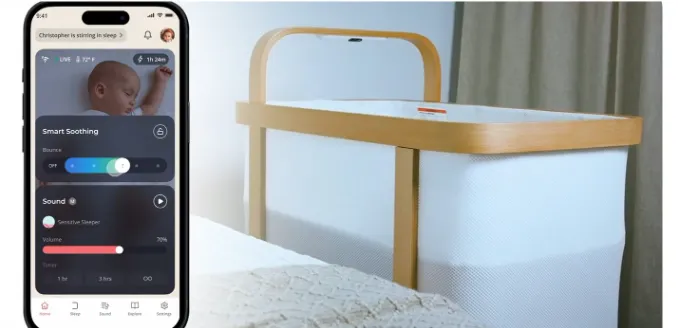
Source: Cradlewise
So, what did Cradlewise do? They rolled up their sleeves and got to work, embracing an iterative approach to development. Each piece of feedback was a stepping stone, guiding them to refine their product into something truly special.
By enhancing their smart features and making the crib more user-friendly, they turned their MVP into a must-have tool for families.
3. Agility Robotics: From novelty to necessity
Year founded: 2014
Industry: Robotics / Technology
Headquarters: Albany, Oregon, USA
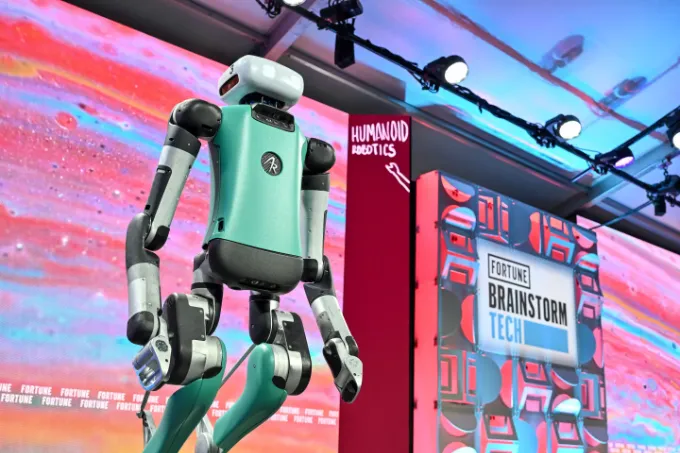
Source: Fortune
Another new kid on the startup block is Agility Robotics. With advancements happening at lightning speed, innovative companies are reimagining the role of machines in our daily lives and workplaces.
Among them, Agility Robotics is making headlines with its impressive evolution from Cassie, a research-focused bipedal robot, to RoboFab, a humanoid designed to assist in factory settings.
But when I first saw RoboFab, I couldn’t help but chuckle, recalling that iconic Friends scene where Joey mistook a guy for a robot just because he didn’t look cool enough.

Source: Collider
Then I realized that while RoboFab may not have the sleekness of C-3PO, it’s got the essentials down pat. It was ready to tackle what it promised — repetitive tasks that no one really enjoys.
Think about it: a robot that doesn’t complain about the monotony of assembly lines? Count me in!
Apparently, even the big bosses of Amazon echo my enthusiasm. With a hefty $150 million backing, Agility Robotics is teaming up with Amazon to tackle tote recycling in warehouses.
Source: Agility Robotics’ YouTube page
Agility Robotics exemplifies how to iterate and improve upon a solid foundation. Each version of RoboFab is a step toward the future we often see in sci-fi films.
4. Shiprocket: Product evolution in motion
Year founded: 2012
Industry: E-commerce Logistics
Headquarters: Gurugram, India

Source: Shiprocket
Shiprocket is a logistics and shipping platform for small and medium-sized businesses in India. The platform set sail to simplify shipping for e-commerce companies, starting with the basics—think shipping labels and package tracking.
But, as any good captain knows, you need to adapt to changing tides. After tuning in to user feedback, the Shiprocket team realized their initial interface was more clunky than a ship in dry dock. So, they rolled up their sleeves, returned to the drawing board, and completely transformed their user experience.
The makeover wasn’t just skin-deep; it turned their MVP into a user-centric powerhouse. Just by seeing the new and old interfaces side by side, I can tell how the new design tackled pain points head-on, allowing users to sail smoothly through the platform.
5. Amazon: From out of the box to outdoing the big boxes
Year founded: 1994
Industry: E-commerce, Cloud Computing, Artificial Intelligence
Headquarters: Seattle, Washington, USA

Source: dittofi
In my opinion, Amazon is and always will be a classic minimum viable product example.
We all know the story: Amazon kicked off as an online bookstore. Jeff Bezos started by buying books from distributors and shipping them to eager readers who ordered online. This simple test of whether folks would buy books on the internet turned into something massive!
It’s hard to believe that the e-commerce juggernaut we know today began as a simple, stripped-down website. When Bezos noticed a steady rise in demands, he then broadened the selection and secured warehouses—turning Amazon into a colossal platform that raked in over $574 billion in 2023.

Source: Amazon
Amazon proves that sometimes, all it takes is a single page to rewrite the rules of ecommerce!
6. Dropbox: One clever video to cloud nine
Year founded: 2007
Industry: File Hosting, Cloud Storage
Headquarters: San Francisco, California, USA
Source: Gordon Yu (YouTube channel)
No product? No problem! This is why Dropbox is the poster child for MVP brilliance!
Instead of building out the entire file storage system from the get-go, its founders cleverly crafted a demo video MVP that showcased their idea in action. This eye-catching explainer video didn’t just tell—it sold! A flood of eager 70,000 signups came pouring in, all from a sneak peek.
Dropbox’s success proved that sometimes, a little sneak peek can open the floodgates to feedback and validation.
7. Duolingo: From simple lessons to language legends
Year founded: 2011
Industry: EdTech, Language Learning
Headquarters: Pittsburgh, Pennsylvania, USA

Source: Duolingo
Duolingo might be a language-learning giant now, but it didn’t start out with all the bells and whistles. In fact, it was built on a quirky vision: to teach people languages for free while turning them into a crowdsourced translation army.
Founders Luis von Ahn and Severin Hacker didn’t even have a formal background in language instruction. Instead, they brushed up on Spanish for Dummies and Googled the 3,000 most common words in Spanish and German to cobble together a basic language course.
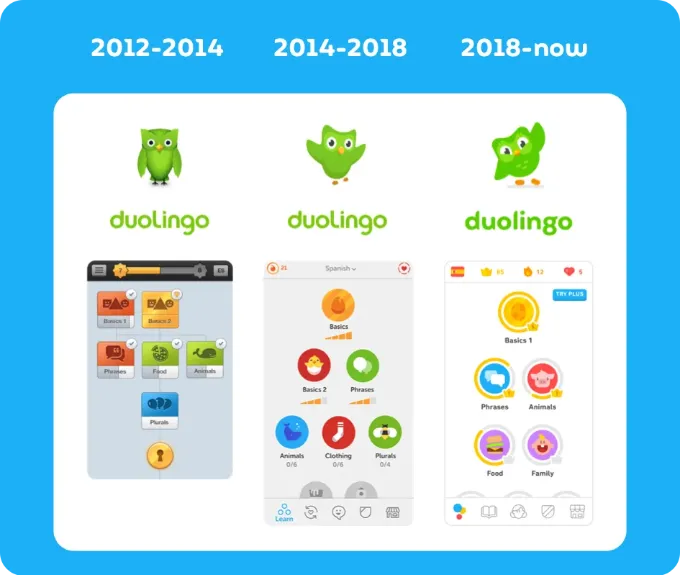
Source: Reddit (calebcole7)
The first version was a no-frills MVP. Duolingo was like a language-learning lab, where user feedback and engagement stats were the key ingredients in every experiment.
Instead of trying to translate what users wanted (literally), they actually listened to their audience. The app evolved through these tweaks, leveling up with fun app gamification features like leaderboards and rewards that made language lessons feel like a game night.
Today, Duolingo has ditched the translation gig and doubled down on helping millions learn languages with ease and a little fun. From scrappy beginnings to a global sensation, Duolingo proves that a product built on listening to users is worth talking about in any language.
8. Uber: A wild ride MVP evolution
Year founded: 2009
Industry: Transportation, Ridesharing, Food Delivery
Headquarters: San Francisco, California, USA
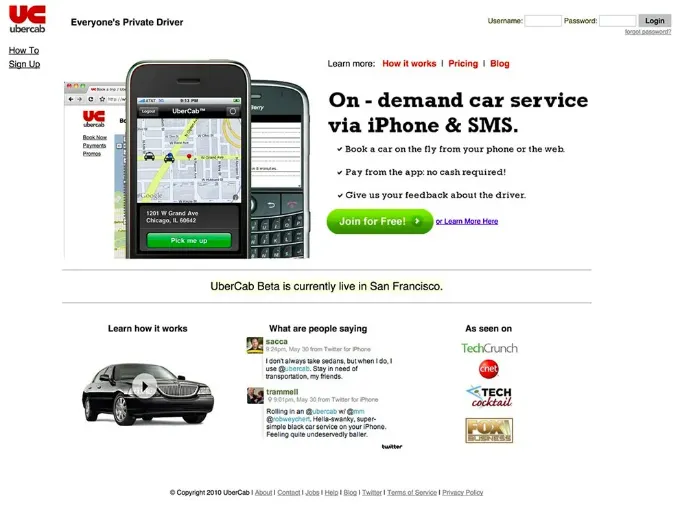
Source: Medium (Logan Merrick)
In 2009, Uber launched as “Ubercab,” a lean MVP on iPhones and SMS in San Francisco, with a bold vision: connect drivers with riders faster than you can say “road trip!”
This simple app was a gamble to see if anyone wanted to ditch traditional cabs for a more seamless ride experience.
It wasn’t until the demand soared that Uber hit the gas. They added GPS tracking, real-time updates, and user ratings to enhance trust.
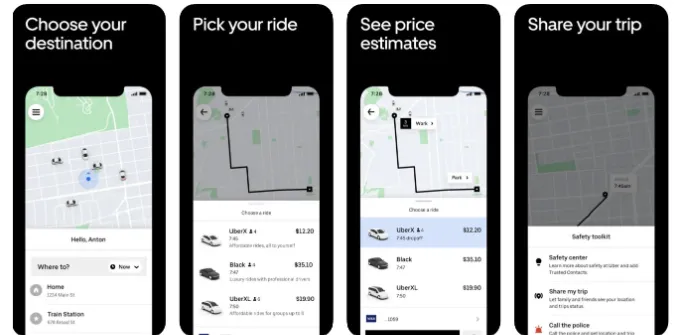
Source: Uber
With each upgrade informed by user feedback, the company transformed its fledgling service into a worldwide phenomenon worth more than $37 billion.
Today, Uber is a staple in urban transport, proving how a good MVP could steer a global success story!
9. Vello: From fan dreams to funding streams
Year founded: 2018
Industry: Mobile App, Augmented Reality, Technology
Headquarters: Victoria, Australia
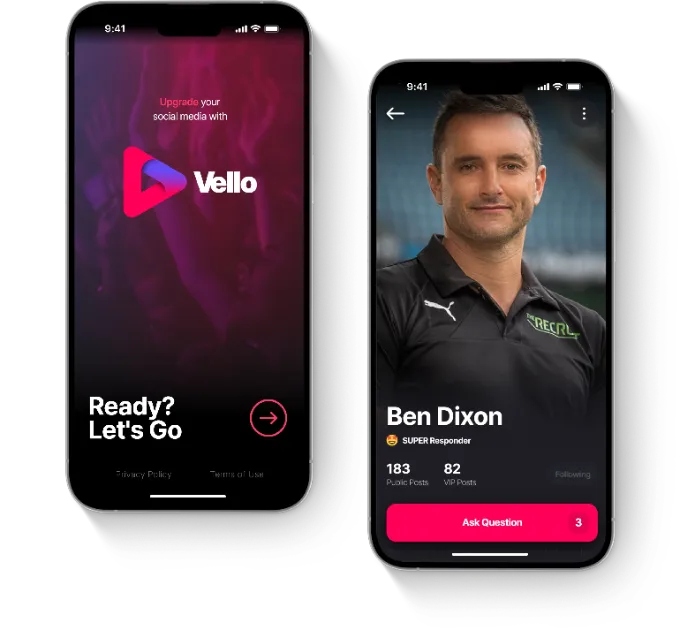
Another successful business with an excellent MVP example is Vello. This celebrity-fan social app was the brainchild of AFL legend Ben Dixon.
Dixon had a game-changing vision: to connect stars with their biggest fans. He envisioned a mobile app that gives fans VIP access to stars through direct messages, exclusive content, and 1-on-1 videos.
But before he could score a touchdown with investors, he needed a winning play.
Teaming up with Appetiser, we crafted an interactive design that dazzled investors and netted over $1 million in funding—talk about a hat trick!
With explosive growth and popularity, Vello now lets fans connect with their favorite celebrities and heroes through Augmented Reality. The platform features over 1,000 celebrities, including Ricky Ponting and George Calombaris, with a combined fanbase of 150 million!
Needless to say, Vello is kicking goals! Check out Vello’s case study to learn more about their exciting app growth journey.
10. Roamni: From crafting narratives to creating value
Year founded: 2018
Industry: Mobile App, Technology
Headquarters: Melbourne, Australia
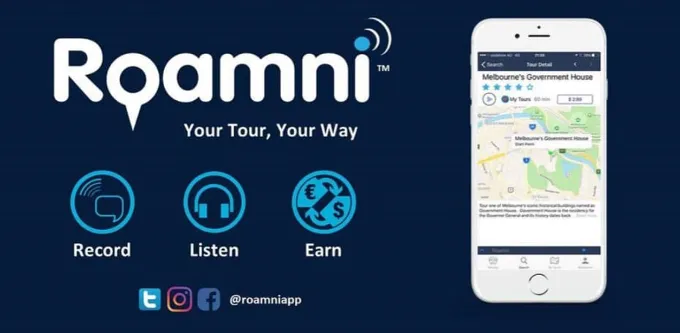
Source: Roamni
Another brand that has used an MVP as its most powerful tool for success is Roamni.
App founders Jason Fabbri and Greg Curciosaw a need to solve a genuine problem: how to share, create, and experience local stories.
For such an Avante-garde concept, Jason and Greg knew they needed more than a pitch deck to stimulate investors’ interest and engage early adopters. So, they turned to Appetiser team for help.
In 6 short weeks, we created a design that reflected Roamni’s unique personality and a clear picture of the vision in action. The resulting prototype has allowed the startup to test the waters, make data-driven iterations, and deliver a superior final product in 6 months.
Shortly after hitting the market, the app witnessed overwhelming user reception and sparked the interest of world-renowned businesses.
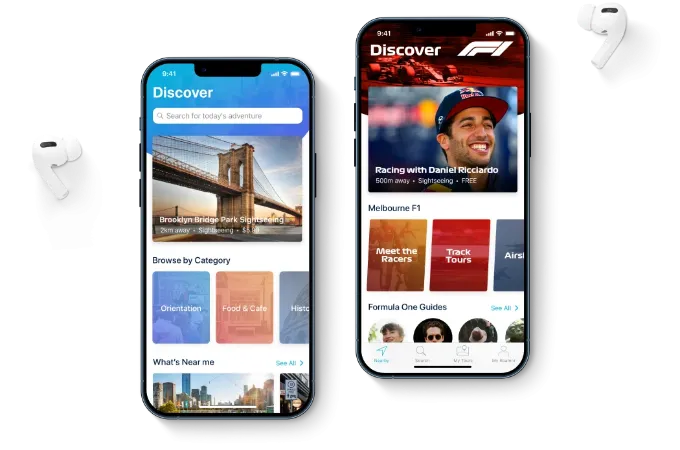
Roamni is now valued at $5 million and recognized as the official partner of Formula 1 and the Australian Grand Prix! Roamni’s inspiring app success story shows how MVPs can grow the seeds of simple ideas into fruitful digital businesses.
See related article: The 5 Best Travel Apps of 2024
11. Airbnb: The MVP that cushioned a multi-billion-dollar dream
Year founded: 2008
Industry: Hospitality, Travel
Headquarters: San Francisco, California, USA

Source: Wayback Machine
Airbnb began as a humble MVP when Brian Chesky and Joe Gebbia faced hefty rent in San Francisco. To stay afloat, they transformed their loft into a short-term rental for conference-goers.
They launched with a simple MVP—air mattresses and breakfast in their own apartment. Then, with just a simple website and some enticing photos, they found guests faster than you can say “bargain stay!” It wasn’t a luxurious suite but a way to validate the concept.
What began as a quest for extra cash soon blossomed into a multi-billion-dollar venture, raking in $9.917 billion in revenue in 2023. Airbnb proves that sometimes, the best way to “loft” your idea is to start small!
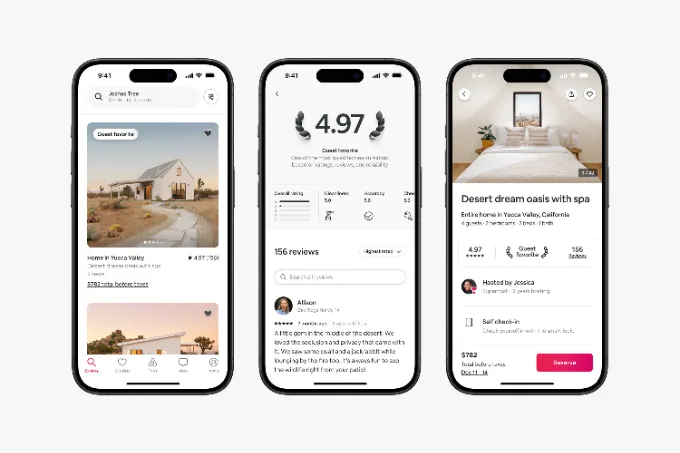
Source: Airbnb
12. Wine Valet: The MVP that poured investor interest
Year founded: 2019
Industry: Wine Recommendation and Delivery
Headquarters: Victoria, Australia
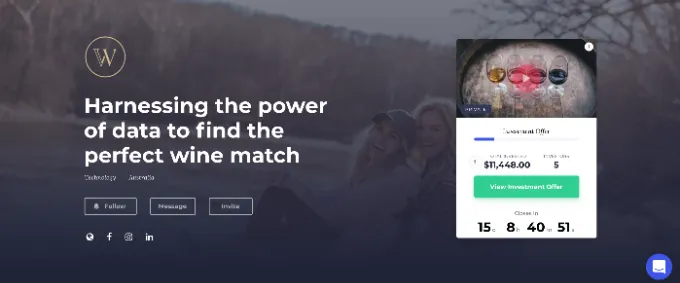
Wine Valet is a smooth example of a minimum viable product that got the investors pouring in.
When Alain and Sarah, two wine lovers and first-time founders, got fed up trying to track down restaurant wines locally, they uncorked a big idea—to blend tech and taste by creating an app that would tailor wine selections to users’ unique preferences.
As newcomers without tech experience, they needed more than just an app; they needed a partner who knew how to turn an idea into a vintage product.

Source: Wine Valet
That’s where Appetiser came in, sharing their passion for bold ideas and innovation. Together, we crafted an eye-catching, design that would entice investors as much as a rare vintage on the menu.
With this MVP, Wine Valet didn’t just meet its crowdfunding goals on Birchal—it smashed them, pulling in investor interest and raising funds with ease.
Check out Wine Valet’s case study to learn more.
13. Pinch: Taking a sharp focus on what users truly need
Year founded: 2023
Industry: Mobile App, Technology
Headquarters: Victoria, Australia

Pinch is a mobile app that turns memorable moments into shareable stories, making it a snap to capture life with friends and family. Founder Claire Fitzsimons felt the pinch of frustration during a holiday as she tried to share and collaborate on media with loved ones.
With heavyweights like Instagram around, Claire knew she had to bring something fresh to the table. Teaming up with Appetiser, she built an MVP that focused on solving what others didn’t—high-quality media sharing, multi-user editing, and social-friendly features, all in one app.
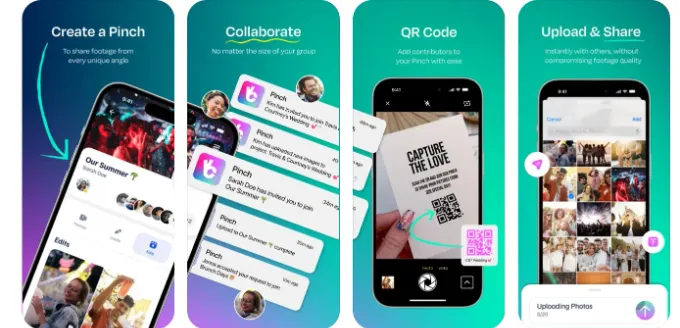
Source: Pinch
Pinch captured what other platforms were missing. Through quick testing and feedback, the company rapidly found its fan base, proving there was room to grow even in a crowded field.
14. Buffer: Proving that simplicity is the ultimate strategy
Year founded: 2010
Industry: Social Media Management
Headquarters: San Francisco, California, USA

Source: Buffer
Buffer is a social media management app that has transformed how brands schedule and analyze their posts. Founded in 2010 by Joel Gascoigne and Leo Widrich, the company all began with a simple idea: let’s see if people actually want this.
Instead of jumping into development, Gascoigne cleverly tested interest with a landing page. His first page laid out Buffer’s value proposition, and the influx of signups led to a second page with pricing—confirming that the demand was real.
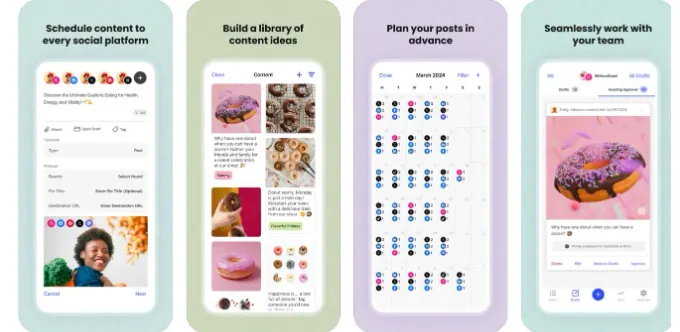
Source: Buffer
Buffer’s journey underscores the power of an MVP that addresses a real problem. By focusing on a simple, effective solution, they showcased that startups can achieve monumental success without overcomplicating things.
As Gascoigne said:
“It was clear that there would be more people out there who would find value even at the early stage. This has been a valuable lesson I’ve tried to maintain: when the signal is there that the product is good enough, shout about it!”
15. Spotify: Fine-tuning experiences, one feature at a time
Year founded: 2006
Industry: Music Streaming
Headquarters: Stockholm, Sweden
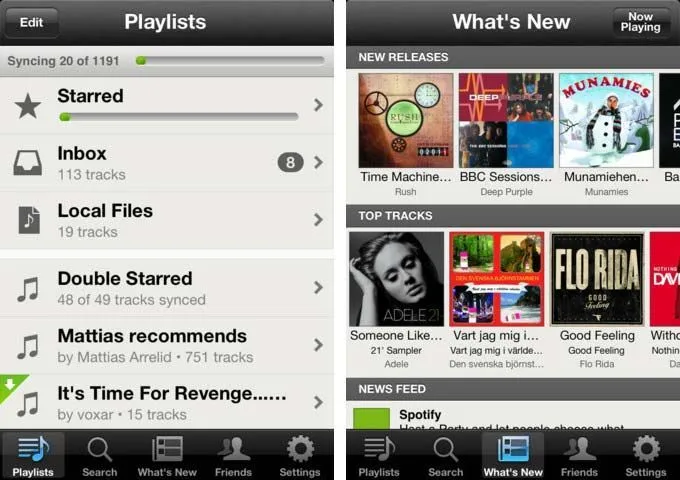
Source: Spotify
Back in the 2000s, downloading music from pirate sites was all the rage—until the music police came knocking. Enter Spotify co-founders Daniel Ek and Martin Lorentzon, who saw an opportunity to transform the music scene.
Spotify offered an instant, legal streaming solution with access to a massive library. They crafted a sleek MVP that wasn’t a full-blown app but rather a super-light desktop app that let users stream music instantly.
The result? They garnered buzz and feedback that hit all the right notes. Their ingenious MVP approach struck a chord, ultimately launching Spotify into a streaming revolution.
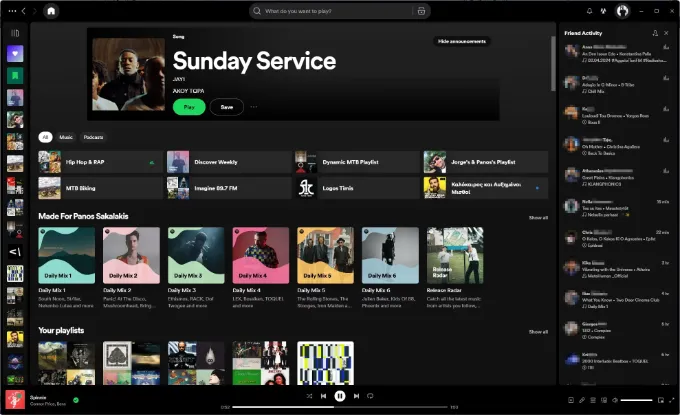
Source: Spotify
Thinking of orchestrating your own music streaming app? Check out our How-To Guide for Creating an App Like Spotify.
16. Netflix: From local mail to global streaming scale
Year founded: 1997
Industry: Entertainment, Streaming
Headquarters: Los Gatos, California, USA
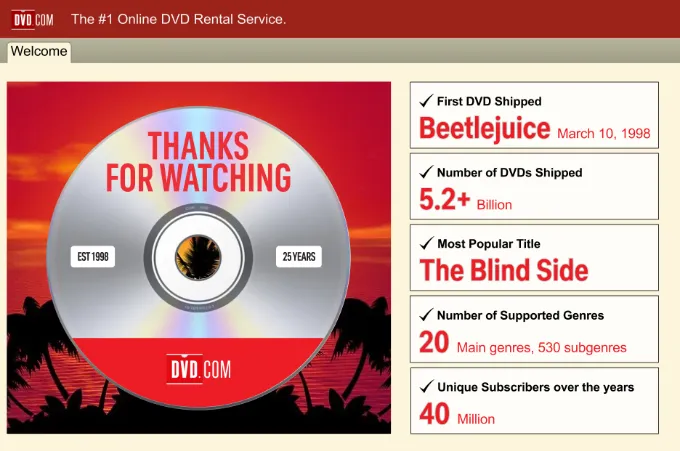
Source: Netflix
Netflix’s journey to the top didn’t start with endless streaming or blockbuster budgets—it began with a single CD in the mail. Back in 1997, Reed Hastings and Marc Randolph had a hunch that people might like renting movies without the hassle of late fees and store trips.
To test the idea, they kept it low-tech: they mailed a CD to see if discs could survive the trip. When it arrived intact, they took it as a sign and launched a bare-bones website where users could rent DVDs by mail. No subscriptions, no algorithms—just a little “click and ship” rental service.
Their MVP got people talking, and Netflix kept tweaking it based on what customers really wanted. After noticing people’s aversion to late fees, they introduced an unlimited rental subscription in 1999.
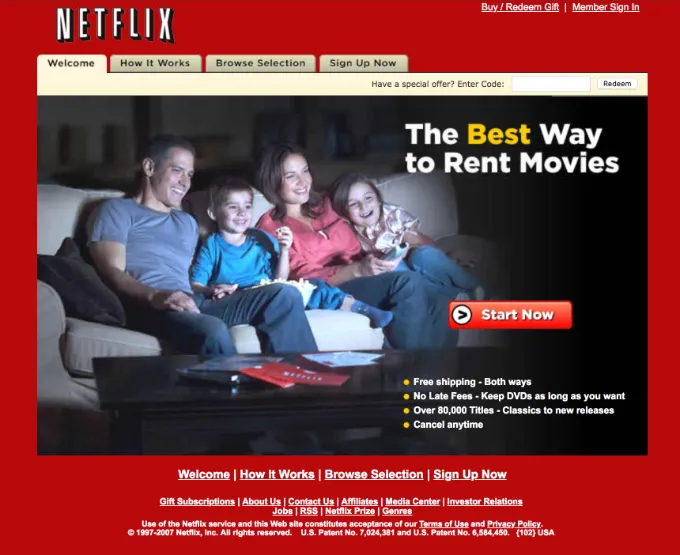
Source: Netflix
Users could keep DVDs as long as they wanted, no strings attached (or late charges lurking). This was Netflix’s “reel” breakthrough, and it set the stage for a whole new way to experience movies.
By 2007, faster internet and better tech made streaming possible, and Netflix jumped on it. No more DVDs—just instant access to movies and shows with a click. This shift wasn’t just a tech upgrade; it was a game-changer.
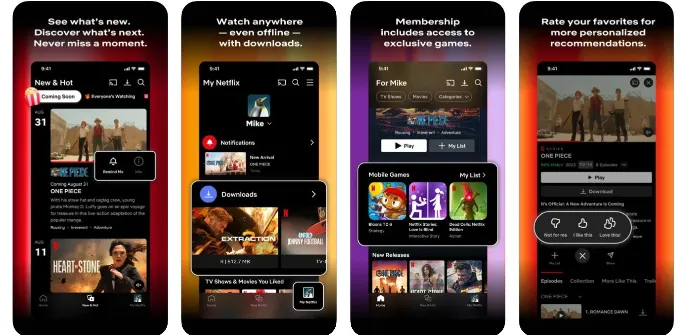
Source: Netflix
Netflix soon went all in on personalizing recommendations and even creating its own content, transforming from a simple rental service into the ultimate streaming giant we know it is today.
17. BuzzMe: Silence the clutter, amplify convenience

BuzzMe is the smart answer to noisy food pick-up notifications. Founder Susan Vincent knew there had to be a better way than calling out names or using bulky buzzers.
Her solution? A sleek web app that sends pick-up alerts right to customers’ devices—making it a game-changer for cafés and small businesses alike.
Initially envisioning a text notification system, Susan shifted to push notifications after budget hiccups. Working with Appetiser, she launched BuzzMe faster than expected, and users instantly loved the calm and convenience of the app.
BuzzMe proves that a nimble MVP can help startups turn ideas into wins by focusing on what matters most to users. With plans to add more features, Susan is ready to keep BuzzMe ringing in success.
18. Groupon: From blog posts to big bucks
Year founded: 2008
Industry: E-commerce, Online Deals
Headquarters: Chicago, Illinois, USA
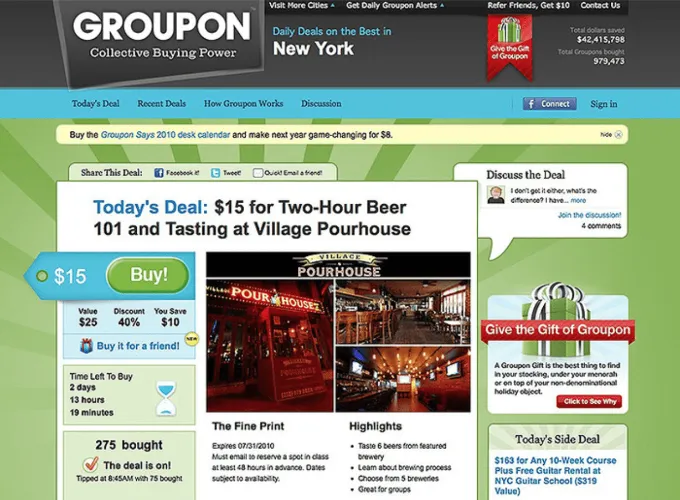
Source: Altar
Groupon’s journey started with an MVP that was as simple as it gets—a basic WordPress site posting daily deals like a blog. No fancy tech, just a straightforward way for local businesses to catch customers’ attention with exclusive offers. This allowed Groupon’s founders to test the waters and see if people would bite without sinking money into complex systems.
As the deals gained traction and users started flocking in, they began adding bells and whistles to streamline the process, making it easy for businesses to sign up and offer discounts.

Source: Groupon
This growth turned Groupon from a humble daily-deal blog into a major online marketplace, linking millions of deal-hungry shoppers with local businesses.
Groupon’s story is a prime example of how starting lean and listening to your audience can pay off big.
19. AngelList: The MVP that launched millions in startup investments
Year founded: 2010
Industry: Venture Capital, Startups
Headquarters: San Francisco, California, USA

Source: Slickplan
AngelList (now Wellfound) kicked off with a brilliantly simple MVP. No fancy algorithms or complex tech—just the founders’ personal networks introducing startups to investors. This no-frills approach allowed AngelList to see if they were onto something without blowing a budget.
Once they had momentum, AngelList went from handshakes to high-tech. They added automated matching, streamlined investments, and built a smoother user experience. Suddenly, it wasn’t just a few friendly intros—it was a full-blown platform where startups and investors could connect with ease.
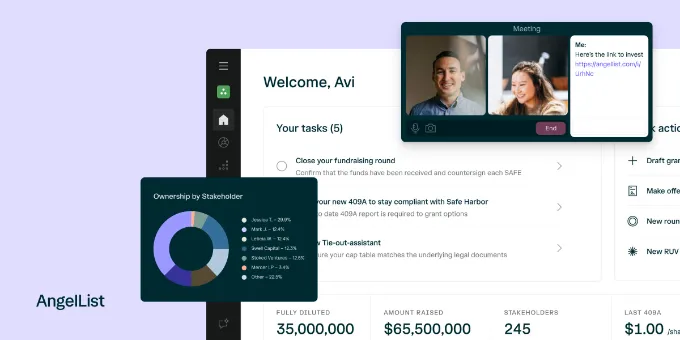
Source: AngelList
Now, AngelList is a powerhouse with over 85,000 investors and $125 billion in assets on platform. My takeaway? You don’t need to reinvent the wheel to make waves—sometimes, a scrappy MVP and a willingness to evolve are all it takes to build a billion-dollar brand.
See related article: How to Pitch to Investors: Solid Strategies to Acquire Startup Funding
20. Zappos: Small steps, big growth
Year founded: 1999
Industry: E-commerce, Footwear and Apparel
Headquarters: Las Vegas, Nevada, USA

Source: Upvoty
Today, buying shoes online is a walk in the park, but back in 1999, it was a leap of faith! That’s when Zappos stepped onto the scene with its “Wizard of Oz” MVP strategy. Founder Nick Swinmurn had a bold idea: would shoppers buy shoes without trying them on first?
As orders started pouring in, it became clear that consumers were ready to embrace this new shopping experience. This early success inspired Swinmurn to enhance the site further, leading to explosive growth. By 2009, Amazon took notice and acquired the company for a staggering $1.2 billion.
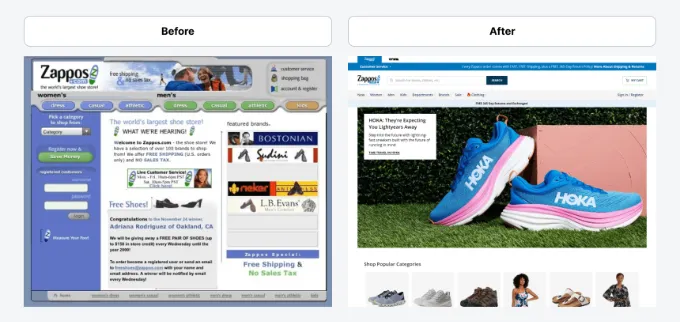
Source: Upsilon
I really admire Zappos for its innovative approach. It’s proof that with a clever MVP and willingness to step outside the conventional, you can turn a simple idea into a billion-dollar brand.
How to Build a Winning MVP

Building minimum viable products isn’t just about slapping together a few features and hoping for the best. It’s an art form—a delicate dance between understanding your audience and delivering just enough value to make them sit up and take notice.
Having seen firsthand what works and what flops at Appetiser, I put together this simple, a step-by-step guide to crafting an MVP that could knock the socks off your target users:
1. Know who you’re serving
Think of your MVP like a fancy meal. If you don’t know who’s dining, you might end up serving lobster to a vegetarian. Start by digging deep into your potential users.
Demographics are just the appetizer. You’ll want to get a taste of their age, gender, income, education, and where they call home. But don’t stop there. dive into their behaviors—how they shop, what social media they scroll through, and how they interact with products similar to yours.
Then, uncover their needs and pain points.
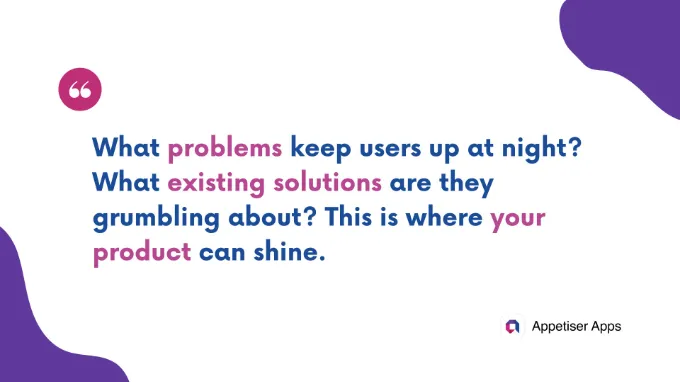
Knowing user preferences can help you prioritize features that will actually make their lives easier, and don’t forget to scope out the competition. Who are the rock stars in your space, and what gaps can you fill?
![]()
As you determine the answers to those questions, this guide for creating personas for UX will be useful.
2. Think “less is more” as you define core features
Here’s where the magic begins. What’s that one killer feature that makes your product stand out in a crowded market?
Use the MoSCow method. it’s a framework that helps you filter out the fluff.

Source: agileKRC
You might be itching to include every cool feature on your wishlist, but resist that urge! Your MVP should be lean but packed with value.
Prioritize what your audience truly needs, and remember, simplicity is the ultimate sophistication. A company specializing in app development for startups can help you get the ball rolling at this stage.
3. Turn your idea into a compelling design
Once you have your core features nailed down, it’s time to whip up a design. Think of this as the first draft of your novel—you need to sketch it out before you start penning the final version. Product wireframes and sketches will allow potential users and investors to visualize your MVP.
This is where you can identify the potholes in your design before you hit the development road. The earlier you spot these issues, the better. It’s like catching a typo in an email before hitting “send”—a little extra time here can save a whole lot of headaches down the line.
4. Remember, feedback is your best friend
Think of that time you confidently sent a message only to realize later you’d misspelled someone’s name? Awkward, right? Avoid that by getting feedback from users as soon as possible.
Test early and often. Share your prototype and be open to criticism—yes, even if it stings. Analyze the feedback, sift through the data, and refine your design concept.
I bet you can pick up a thing or two from how Appetiser’s Head of Delivery, Maku Monetecer, gathers user feedback:
![]()
I usually let other people use the app to see how they interact with it. I’ll ask them, “If you see this, how would you use it?” If they don’t get it at first glance, then I know there’s something wrong with the UX. Since I’ve been in app development for a while, everything makes sense to me, so I need that fresh perspective from regular users. That’s how I try to balance it. I also make a conscious effort to view the app from a different perspective because, when testing UX, you need to have the mindset of a normal user.
This iterative process is crucial. The more you know about how users interact with your product, the better you can shape it to meet their needs.
Tracking the time your team spends on each feature helps pinpoint bottlenecks and prevent scope creep. A time‑tracking app like Paymo can make this process effortless.
5. Implement, launch, and iterate
With your final design in hand, it’s time to start coding. This is where your MVP becomes a real, working product. But don’t think of launch day as the finish line—it’s more like the starting gun.
Keep the momentum going post-launch. Collect user feedback like it’s going out of style, and be ready to iterate based on what your audience says.
Just because you’ve launched doesn’t mean you’re done—think of your MVP as a living, breathing entity that grows and evolves with its users.
People also ask about minimum viable products
I know you have other burning questions in mind, so here are some of the common questions and answers.
1. What separates a Minimum Viable Product (MVP) from a proof of concept?
Bringing a product to life often raises the question: “Is this something people would actually use?” An MVP tackles that by delivering only the key features for users to try right away. The focus is to check if your idea deserves more time and energy.
MVP is built for early users. It’s functional enough to let customers interact and respond. The true test: will they actually use it, or will it get ignored? Proof of concept is built for your team. It helps answer: “Can this even work?” but isn’t ready for public hands.
2. Why do many young companies stall by skipping the MVP stage?
Many startups invest heavily in an “all-in” launch. The result: a slick app that nobody wants. Research finds that around 90% of startups close because they skip user validation early on.
- Fast feedback saves capital.
- User insights highlight what matters and what doesn’t.
- Launching lean helps avoid costly mistakes before scaling.
Dropbox, for example, started by sharing a short demo video instead of a full product. Interest boomed, showing it was worth building.
3. How do chatbots and large language models help in shaping new products?
Smart tools today can speed up testing and learning. A simple bot on your landing page can give support to users at any hour. It can even spot patterns and review what customers ask or struggle with. It can also let you tweak wording, flow, or features based on what the bot hears.
4. What are the perks and drawbacks of using chatbots for gathering feedback during an MVP rollout
When it comes to the perks, the support is always around, and feedback comes in constantly, without extra effort. It’s also easy to see where multiple users get stuck. However, the cons is that not all questions get handled with real care if bots aren’t trained well. These bots can miss the “why” behind a pain point and the initial setup takes prep and testing.
5. What’s the biggest mistake businesses make when launching a product, and how can an MVP help avoid it?
Jumping straight into a full product build because you’re excited or worried about competition can quickly drain your budget and energy, only to fizzle out on launch.
Now when it comes to founders who also plan to launch digital products, here’s what our Brian Wong, senior product manager said, “Many passionate founders are excited to launch their product but face delays due to a lack of experience in technology. A common issue is focusing on having “everything” in the app rather than doubling down on the essentials of an MVP (Minimum Viable Product). Experience and product confidence build over time, but starting small and iterating based on real user needs speeds up success and reduces overwhelm.”
Create an MVP to be the MVP in the long run
So, are you ready to build your app? Fantastic! Creating a minimum viable product is your competitive edge in a world where the latest craze changes faster than you can hit refresh.
Your MVP is your ticket to understanding customer needs and preferences. It’s a smart way to test the waters and validate your business idea without going all-in on a full-blown launch. I’ve seen countless startups hit the ground running using this strategy, and it’s always impressive to witness.
Take it from us at Appetiser. We’ve been in the trenches with a ton of app development partners, and we know what works. Our world-class design skills have helped many startups evolve into juggernauts with millions of active users and billions in revenue.
It’s exhilarating to be part of that journey—seeing an MVP concept transform into a brand that resonates with users.
Let’s strategize together! Schedule a free consultation with our app development experts today, and let’s talk about your idea!
Jessica La is a Content and SEO Consultant at Appetiser with 6+ years in the industry. If she’s not writing and optimizing content, you can find her with a cup of coffee delighting in literature or sci-fi books.


